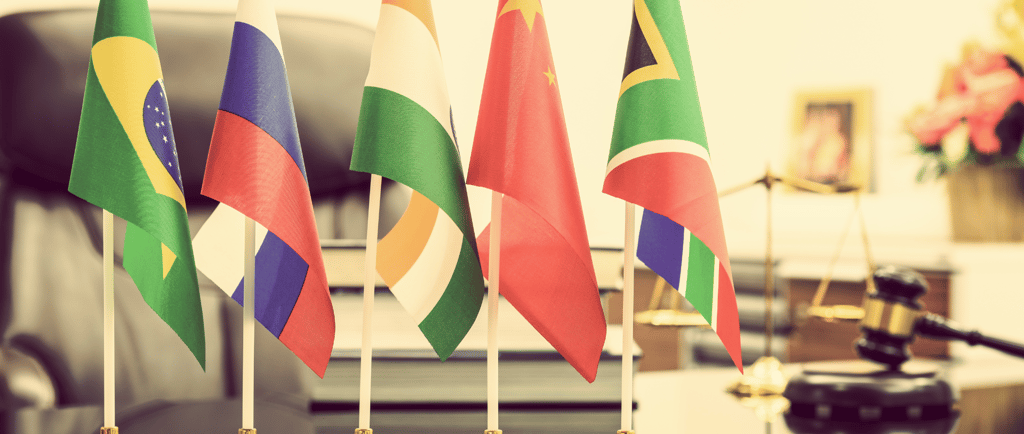BRICS+: Recent Developments and the Resurgence of the De-Dollarization Movement
Laila Shaheen
5/19/20253 min read


To contextualize the BRICS-led resurgence of the de-dollarization movement in recent years, it’s important to understand the recent geopolitical and economic developments of the alliance. This piece highlights BRICS’ inception, examines recent developments within the BRICS consortium, and outlines the reasons behind the aggressive push to de-dollarize.
The origins of BRICS trace back to 2001 when the term “BRIC” was coined by Goldman Sachs’ economist Jim O’Neill to describe the emerging market potential of Brazil, Russia, India, and China.
At the time, the grouping had no formal political alignment; it was purely an economic classification.
In 2006, the four countries began to engage diplomatically, and in 2010, South Africa was invited to join, transforming BRIC into BRICS.
Since its formation as a political and economic alliance, the BRICS has positioned itself as a counterweight and disruptor to the Western-led global order. However, the bloc has faced persistent skepticism from Western observers regarding its sustainability and impact, largely due to the diverse nature of its member states.
The bloc’s diversity, and in some cases internal rivalries (e.g., India and China; China and Russia), make it difficult for the coalition to use its leverage in targeted and unified policy positions.
Additionally, while some members are anti-Western establishments like Iran, Russia, and China, others, like India, Egypt, the United Arab Emirates (UAE), and Brazil, adopt a more balanced approach, maintaining ties with both Western and non-Western alliances.
This internal fragmentation in interests, ideology, and aspirations undermines the bloc’s potential political heft against more homogenous Western alliances like the G7 and NATO.
As a result, the “inevitable collapse” of BRICS has long been anticipated. Yet, almost two decades later, BRICS has not only endured but also expanded.
In August 2023, during the 15th BRICS Summit in South Africa, the group announced the admission of five new member states: Saudi Arabia (delayed membership), Iran, Egypt, the UAE, and Ethiopia.
This expansion, effective from January 2024, ushered in a new expansionist era for the alliance. As of April 2025, BRICS+ has evolved into a 10-nation bloc, with Indonesia as its most recent member.
In addition to its expansion in membership, BRICS+ is also seeing a flood of membership requests from developing countries seeking an alternative to the Western-dominated international order, which they view as a barrier to their growth and development.
To accommodate, the BRICS+ began welcoming nation states as “BRICS partners.”
Both the membership and partnership expansions are an evolving story. As of April 2025, BRICS+ has eight partners (potential members to be): Belarus, Bolivia, Kazakhstan, Cuba, Malaysia, Thailand, Uganda, and Uzbekistan.
This expansion effectively makes BRICS+ a significant player in Asia, Africa and the Middle East. It also means that BRICS+ now represents more than 46% of global GDP (measured in purchasing power parity), further enlarging the gap with the G7’s 28.65%; 55% of global population; and over 25% of global exports.
Geopolitically, the recent expansion of BRICS underscores the failure of Western attempts to isolate ‘misbehaving’ countries. For instance, despite Western efforts to isolate Russia for its illegal invasion of Ukraine, the 2024 BRICS summit, held in Russia, welcomed four new members, nine new partners, and attracted membership interest from some thirty other countries; a clear signal that Russia still has many friends.
A Coalition of Hope?
Analyzing the characteristics of the countries joining or interested in joining the alliance, it becomes apparent that while the BRICS+ is appealing specifically to countries isolated by the current Western-dominated international institutions (Cuba, Iran, Russia), it is also attracting emerging economies from every continent that are interested in new international governance systems that treat them equitably.
Beyond political agency, BRICS+ provides its members with alternative institutions that counter the neocolonial systems that have historically drained their resources. It offers the International Development Bank as a viable alternative to predatory loans from the World Bank and the debilitating structural adjustment programs of the IMF, which have hampered their ability to industrialize.
A familiar cliché in Africa reflects the disillusionment with ideals-preaching Western institutions: "Every time the Chinese visit, we get a hospital; every time the British come, we get a lecture."
BRICS+ and its initiatives to create parallel institutions that enhance South-South collaboration and integration represent a breath of fresh air for emerging economies that have long been exploited as a springboard for Western enrichment.
As I stated earlier in this series, the historical moments that contributed to the rise of the U.S. and its dollar, and facilitated the establishment of neocolonial international institutions supporting the American empire, are beginning to reverse.
While many developing countries and coalitions are seeking greater autonomy from the United States and its dollar, BRICS+ stands out as a particularly compelling case study for three key reasons: (1) its explicit and longstanding commitment to de-dollarization; (2) its diverse membership, which holds substantial geopolitical and economic weight; and (3) its proactive efforts to establish alternative financial institutions, such as the New Development Bank, and infrastructure, including BRICS Pay and CBDC networks.
Where BRICS+ finds itself today is at a moment of unprecedented collective bargaining power and a strategic position to follow through on its long standing objective of de-dollarization and diversifying global financial systems to reflect today’s multipolar world order.
© 2025. The PoliTech Brief. All rights reserved.